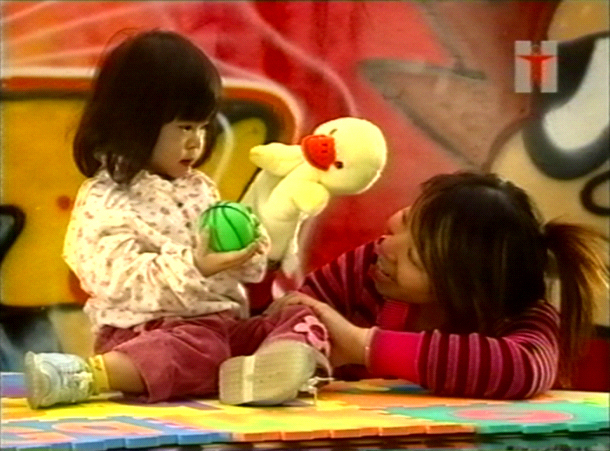Video on development of 12-18 months
Development from 12 to18 Months – English
Heading: Development from 12 to 18 Months
Sub-heading: Walk
Scene: The mother holds her little boy's hands to teach him walk. The boy cruises a few steps by holding onto a TV cabinet. Another 2 children walk freely by themselves in the living room. One of the boy squats down to pick up a toy from the floor. He then walk to and climb up the sofa.
Narrator: Children start learning to walk at this stage. Although they may still wobble in their steps they can balance fairly well and try to squat down. Some of them may even climb onto furniture.
Scene: The mother holds her little boy's hands to teach him walk. A family member uses a toy to attract the boy to walk towards her. The little girl who knows how to walk is pulling a toy cart along.
Narrator: You can encourage your child to walk more such as by giving her a pull-along toy when walking. You can also take your child to the playground or to have more outdoor activities.
Sub-heading: Coordinate with hands and fingers
Scene: A baby is playing with an activity board. She uses her fingers to spin, press, pat and turns the different knobs on the activity board. The boy puts a small ball through the hole of a toy ring held by his mother. The boy is playing toy blocks with his parents. He stacks one block on top of another. Another girl sits on her father's lap is reading a big cardboard story book. She turns the page by herself. She scribbles on a magic board. She follows her parents' instructions by putting her toys in and taking them out of a basket.
Narrator: Their hands and fingers coordination has become more accurate. They can stack blocks, turn thick pages of a book, doodle with a crayon and put objects in and out of a container.
Scene: The girl and her father is playing with toys on the floor.
Daddy: Comb.
Scene: The girl hands the comb to her father.
Narrator: At this stage they know the name of objects and will look at the object named by you.
Daddy: Telephone.
Scene: The girl picks up the toy phone and pretends to talk.
Daddy: Drink.
Scene: The girl takes the toy cup from the floor and pretends to drink. The father then holds a doll and shows it to the girl.
Daddy: Comb comb.
Scene: The girl picks up the toy comb and comb the hair of the doll.
Sub-heading: Understands simple instructions
Narrator: They can also follow simple instructions.
Scene: The girl plays attentively with her toys. The father holds out his hand to the girl.
Daddy: Give me.
Scene: The girl puts the toy in the father's hand.
Daddy: Good girl. Bye-bye.
Scene: The girl waves bye-bye.
Sub-heading: Begin to talk
Scene: The father and mother play and talk to her girl. The girl responds by making sounds like “Ah” “Ah”.
Narrator: As they start to talk with jargons or sometimes words, try talking to them frequently and let them imitate your words.
Scene: The girl picks up a ball.
Mother: What's that? A ball.
Scene: The girl hands the ball to her father and makes some sound like “Eh” “Eh”.
Sub-heading: Think
Scene: The girl looks at and explores the toy phone in her hand.
Narrator: Children of this age start to take interest and experiment on things around them.
Scene: A boy is playing with his parents. He throws a ball to the floor and it bounces. He finds it funny. He then thorws different objects on the floor to test if they also bounce.
Narrator: For instance, when a child finds out a ball bounces when he throws it, he will throw other objects to check whether they will bounce too.
Scene: Another little boy is playing toy blocks with his parents. He finds a block hidden under a box easily. The boy drops the block and it rolls under the sofa accidentally. He crwals down on the floor and try to stick his hand under the sofa to get it back.
Narrator: They will also try to solve problems.
Scene: A boy and a girl are playing tea set on the floor. The girl puts a toy spoon to the doll's mouth and pretends feeding it. She puts a toy phone to her ear and pretends talking with her father. The parents are reading newspaper on the sofa, a boy holds a book and imitates what they are doing.
Narrator: They like simple pretend play such as playing with a tea set or imitate the actions of adults. The way they play actually reflects their observation in daily life.
Sub-heading: Care for self
Scene: Three toddlers sitting side by side eating at a small table. They try to use the spoon to feed themselves and hold a cup to drink.
Narrator: Give more chances for your child to try in self care activities. You will discover that he can do so much like eat with a spoon and drink with a cup.
Scene: One of the little boy plays with his food while eating and makes a mess on the table.
Narrator: Don't get upset if your child makes a mess during the learning process. You should praise and encourage him. This can help your child to build up a sense of achievement and to be independent.
Scene: The mother praise the girl eating nicely by clapping her hands. The father hands a piece of paper towel to the boy to clean his mouth.
Sub-heading: Like being with other children
Scene: Three toddlers are playing in the living room. Each child is playing with different toys and with little interactions.
Narrator: Children like making new friends at this stage. Although they like being with other children they still play on their own most of the time.
Scene: A boy and a girl are snatching a toy. The boy cries when he fails to get the toy. Then another boy comes and he snatches the toy from the girl.
Narrator: They are still self-centered and may snatch toys, throw tantrums or even fight with other children. If that happens, stop him immediately and encourage your child to express his needs through words or gestures.
Scene: The father comes over and stops the boy. The boy stops and use gestures to show his father what he wants.
Both nature and nurture affect every child's development. While nature is important in determining your baby's capabilities and abilities, the role of a nurturing environment is of equal importance in your baby's learning and emotion development.
Development is a continuous process and has a certain sequence that children would go through. However, parents should remember that every child is unique. Children have their own pace in development and vary in their abilities. If you are unduly concerned, talk to your doctors or nurses.
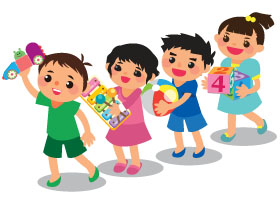
What you can do to help your baby's development
What babies can do
What you can do
I can walk!
Make the home environment safe
From wobbling to walking, I can go anywhere I want to go!
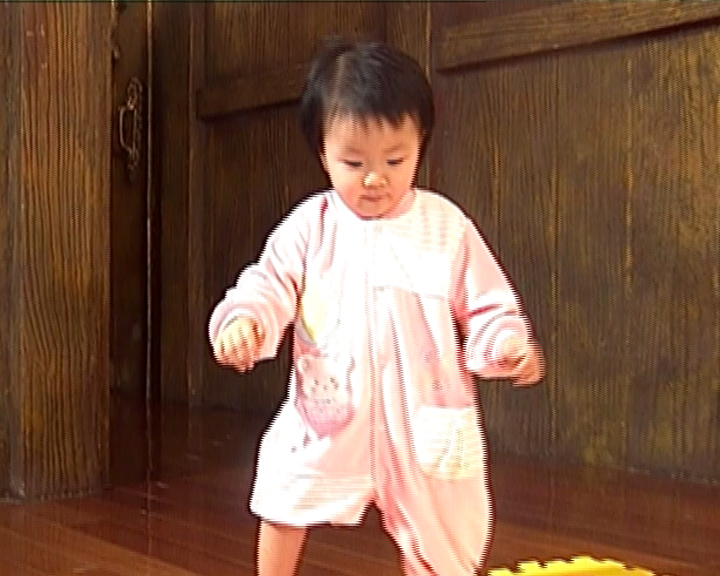
Keep me within your sight and watch out for home accidents
You can place me in the play pen and make it child-proof when you have to leave me for a while
I can climb onto low furniture
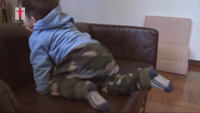
Keep my surroundings child-proof, so that I will not get hurt if I climb up the couch or stool or crawl under the table
Encourage me to walk by giving me pulling toys with string
I need 3 hours of physical activities in a variety of ways, so take me outdoors and let me run and climb in the playground as well as meet some friends there!
Don't put me in stroller, high chair or baby carrier for long time!
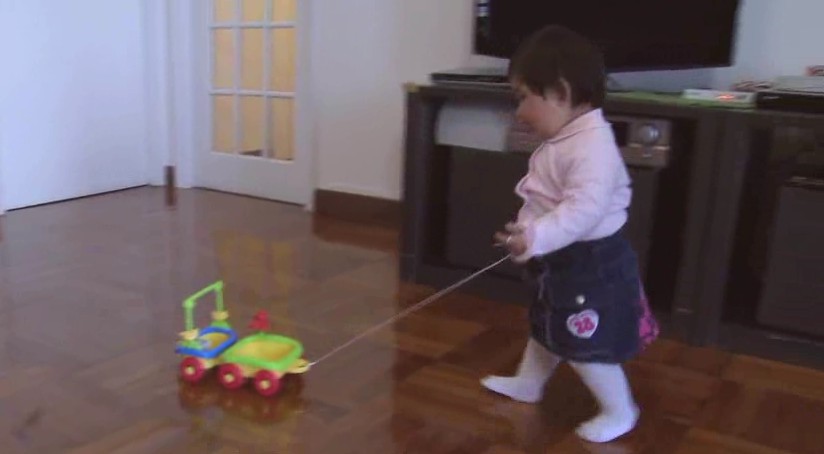
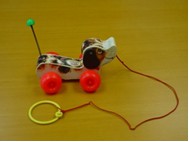
My eye-hand coordination enables me to do more
Play with me
I can place toys into a box
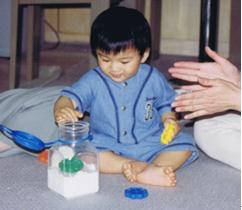
Give me a bucket or a basket for me to take out and put in toys. Never let me play with plastic bags to avoid causing suffocation
I can stack blocks
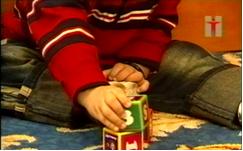
Stack up blocks or small paper boxes with me
I can turn the pages of a book
I am happy when you let me turn the cardboard pages while talking about the pictures in the book to me
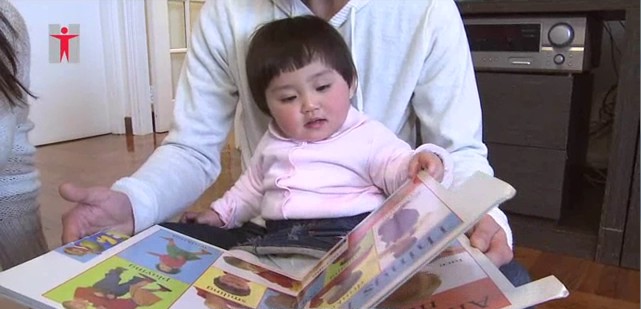
I can hold a crayon and try to scribble
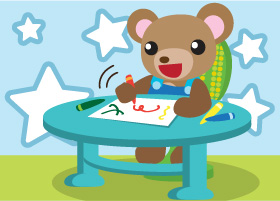
Scribble with me on paper with crayons
I start to understand what you say; I also learn to talk
I start to understand names of familiar persons and objects. I will look at them when you mention their names
I start to understand simple instructions, e.g. “Give me the ball”
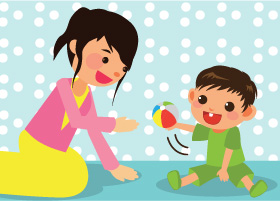
Talk to me and appreciate my different attempts. Instead of just talking to me,let baby tell you how to talk together with me.
Heading: Baby Talks
Scene: Baby Yau Yau is crawling on the floor.
Kin: Baby.
Scene: Baby Yau Yau is walking alone and looking around.
Yau: Where're mom and dad?
Kin: Baby.
Ying: Baby.
Kin: Baby, do you get what I mean?
Ying: Baby, will you respond to mom?
Scene: Baby Yau Yau looks down and finds her “strunken” father and mother.
Yau: Oh! Here you are! Let me sit down first, you have something to tell me?
Kin: Baby, that's great! Dad no longer needs to look up to see your face.
Ying: We can also see your expression and response clearly.
Scene: Baby Yau Yau lies down on the floor and talks to her father and mother.
Yau: Dad and mom, if you want to better communicate with me and have my response, please sit down and watch this video attentively. I will give you some useful tips when talking and playing with me. Don't miss it!
Heading: Baby Talks
Scene: Father Ah Kin and mother Ah Ying sit on the sofa, while baby Yau Yau sits on the floor mat and is playing her toys.
Ying: Yau Yau, look! Here's the ring!
Kin: Yau Yau, here's the ball!
Yau: Sitting on the sofa are my dad Ah Kin and mom Ah Ying. They talk and play with me whenever they have time. By listening and watching them, I can roughly guess their meaning. However, they do not seem to get what I am doing. Why don't they understand even when I've indicated to them?
Scene: Baby Yau Yau shakes her head, shows her father and mother the toy in her hand while they are busy telling Yau Yau what toys they have.
Kin & Ying: This ducky is beautiful!
Scene: The doorbell rings.
Kin: I'll get it.
Yau: Hey, somebody is coming! Who's there?
Scene: Father opens the door, auntie Ah Shan is standing outside the door carrying baby Alvin.
Kin: Hello, Ah Shan, Alvin!
Shan: Hello, Ah Kin.
Yau: Oh! It's auntie!
Shan: Hi! Let's take off our shoes first.
Kin: Yes! Let me help Alvin.
Scene: Auntie Ah Shan carries baby Alvin, walks into the house and talks to him.
Ying: See? Auntie Ying is over there! Hello! Let's say hello to Auntie.
Shan & Ying: Hello!
Ying: Yau Yau, say hello to auntie and Alvin!
Scene: Auntie Ah Shan puts down baby Alvin. Yau Yau and Alvin sit on the floor mat and play with the cooking set. Ah Shan, Ah Kin and Ah Ying are standing and talking.
Alvin: Yau Yau, mom and I come to visit you again!
Yau: I am so happy!
Kin: Yau Yau seems so happy to see Alvin!
Ying: Yau Yau, greet auntie!
Kin: Say “hello”.
Scene: Auntie Ah Shan squats down, face to face with baby Yau Yau.
Shan: Yau Yau, I am auntie, say “hello”!
Scene: Baby Yau Yau can see auntie Ah Shan clearly because Yau Yau is facing auntie Ah Shan. She cannot say Auntie, instead, she makes “ahah” sound happily.
Yau: ahah.
Ying: How come Yau Yau responds so well to you? We always talk to her but she's so responsive to you.
Shan: My daughter used to ignore me when she was young but there are ways to change.
Scene: Ah Shan, Ah Kin and Ah Ying sit on sofa at living room to discuss.
Shan: Talking to babies is a “two-way” communication.
Ying: “Two-way”?
Shan: First make sure you and the baby can see each other clearly. Also, you mustn't just carry on talking to her non-stop. You need to be aware of her facial expressions,
sounds and actions and then respond to her. Let the baby know that you understand her. Then she will be interested to talk with you.
Kin: But why was she ignoring us while we were chatting and playing with her
just before you arrived?
Ying: Right! She always ignores us.
Shan: How do you usually play with her?
Kin: Usually, she sits on the floor and we sit on the sofa and then hold the toy to draw her attention but she pays no attention to us!
Shan: Why don't we sit down on the floor and play with them and see if we see any difference!
Kin: Okay!
Scene: Ah Kin, Ah Ying and Ah Shan sit on the floor mat, face to face with baby Yau Yau.
Kin: Wow! It's really different from before. I can finally see her facial expression!
Ying: I get it now!
Shan: Mm!
Yau: Auntie is great!
Alvin: She learned it from the Maternal and Child Health Centre.
Scene: Ah Kin pushes a toy car on the floor mat forward and backward. Baby Yau Yau and Alvin are playing with the cooking set.
Kin: Let me try, Yau Yau here's the car! Yau Yau? Why's she ignoring me?
Shan: You're right to bend down to talk to her but did you notice they are playing with a cooking set? If you want your baby to respond to you, you should join in with their activity so they will pay attention and give you a proper response.
Ying: I get it.
Scene: Ah Kin picks up a toy cup, Ah Ying picks up a toy teapot and join playing cooking time with baby Yau Yau together.
Kin: Do you want some tea?
Shan: Your baby learns a lot from playing with you.
Scene: Ah Shan turns to Alvin to join him playing with the toy rice cooker by picking up a toy and putting it into toy rice cooker.
Shan: Shall we put it in? Put it in!
Scene: Baby Alvin imitates Ah Shan, picking up a toy and putting it into a toy rice cooker.
Shan: Yes, Alvin can put them into the cooker. Good!
Ying: I see, when Alvin picks something up, you teach him to put it inside.
Kin: And you praise him for doing so. This is what you mean by responding to the baby.
Shan: That's right, that's it!
Yau: Your mom is terrific! She teaches you while playing with you. Also she always praises you. It would be great if my mom and dad did this.
Alvin: Yau Yau, my mom and dad also had to learn before they knew how to do it! Uncle and auntie look smart. They will learn quickly.
Yau: Hope they pick it up fast.
Scene: Ah Kin is carrying Yau Yau, Ah Ying is pushing a stroller, Ah Kay and Ah Kam are pushing another stroller, going to the park together. They meet Ah Shan, Ah On and baby Alvin at a pavilion.
Kin: Oh! It's raining. Let's get under shelter, OK?
Kam: OK! Hi! You're early, hello!
Shan & On: Hello there.
Kin: Yau Yau, let's sit down.
Scene: Ah Kin put baby Yau Yau back into the stroller.
Kam: I'm thirsty, let's buy some drinks?
Kin: I'll go with you! You want anything?
Kay: No, thanks.
Kam: Let's go!
Scene: The three mothers, Ah Ying, Ah Kay and Ah Shan, and Ah On sit on a bench in the pavilion, the three babies sit in their strollers.
Ying: Ah Shan, we followed what you said when playing with Yau Yau. We all really enjoy the play and she talks more.
Shan: That's good! Really good!
Kay: Yes, my Jo Jo also talks a lot more recently!
On: What does she say?
Kay: I don't know! She makes some sounds and she likes to talk to me.
Yau: Jo Jo, I'm really happy to see you again.
Jo: Yau Yau, Alvin said your mom and dad are learning how to communicate with you.
Alvin: Right, my mom taught them.
Yau: In the past, I had to look up before I could see them. It is different now. They sit down on the floor or lift me up when talking to me.
Jo : Great! But sometimes, adults are just careless. Just like my mum, once we were waiting for the lift. I wanted to press the lift button but she thought I was being naughty. But my dad knew what I wanted and taught me to say the word “button”.
Scene: Father Ah Kam, mother Ah Kay and baby Jo Jo are waiting for an elevator. Jo Jo stretches out her arm trying to press the elevator button.
Kay: Jo Jo don't be naughty.
Scene: Ah Kam squats down, face to face with Chun Chun.
Kam: Hey! So sweetheart do you want to press the button?
Scene: Jo Jo nods her head, father Ah Kam picks her up and shows her how to press the lift button.
Kam: Daring, it glows. Look! It's a “button”! You want to press it?
Scene: Jo Jo stretches out her arm and presses the lift button.
Kam: Wow good job! Let's wait for the lift.
Scene: Back to the pavilion in the park, the three babies sit in their own stroller.
Alvin: Ah your dad is very smart. He can read your mind and teach you so many things.
Jo: As long as the adults observe what we are doing and what we like before teaching us, that will make everyone happy.
Yau: Alvin, how about your dad?
Alvin: My dad loves me very much but sometimes his speech is either too long or too difficult, so I do not quite understand.
Scene: Father Ah On, mother Ah Shan, baby Alvin and sister are waiting for the school bus at the station, Alvin wants to pull his sister's school bag.
Alvin: Once, my mom and dad brought me along to send my sister to school. I wanted to touch her school bag.
Sister: Dad, Alvin pulled my school bag!
Scene: Ah On bends down, says a lot of things to Alvin.
On: Alvin, why are you doing that? There're lots of books and notebooks inside, be careful.
Alvin: Dad said so many things that I didn't understand
On: Listen! Please don't pull it again!
Scene: Mom Ah Shan picks up Alvin.
Shan: You want to play with her school bag?
Alvin: Mom responded differently. She just told me not to play with my sister's school bag. She knew I wanted a school bag though and gave me a small one.
Scene: Back to the park, the three babies sit in their own stroller.
Jo: Your mom is so clever!
Alvin: Yes, my mom understands my mind very well. She explains things to me in simple words that help me understand easily. Yau Yau, how are uncle and auntie recently?
Yau: Since Auntie Shan came last time, mom and dad have improved a lot. A few days ago, they took me to the fruit store.
Scene: Ah Kin walks inside a fruit store with Yau Yau and Ah Ying. Ah Ying picks up an orange.
Ying: Yau Yau, your favourite oranges!
Scene: Yau Yau picks up a lemon, Ah Kin squats down.
Yau: Ooah!
Kin: This is a lemon, its sour. Yau Yau, do you like it? “Lemon”, lemons are sour. Do you like it? Wonderful Yau Yau!
Scene: Yau Yau passes the lemon to her father, Ah Kin put it back onto the shelf, and picks up a bunch of bananas.
Kin: Now look at this bunch! Wow! Bananas! They smell and taste good! Want to try? “Bananas”.
Yau: Dad knew I like fruits, so he showed them to me and taught me a lot of things about lemons and bananas.
Scene: Yau Yau touches a pear.
Kin: This is a pear.
Shopkeeper: Is this your child?
Ying & Kin: Yes.
Shopkeeper: She's cute!
Ying: Thanks!
Scene: Back to the park, three babies sit in their own stroller.
Yau: The shopkeeper said I was cute!
Alvin: See how happy you are when you get praised!
Jo: Yau Yau, your mom and dad have really improved a lot!
Yau: Hopefully they'll get even better!
Scene: Ah Kin and Ah Kam are chatting while walking back to the park.
Kin: My wife and I have learned how to play with Yau Yau anywhere and anytime. And not just at home either, we also interact with her while shopping to give her more learning opportunities.
Kam: You've learnt, haven't you?
Kin: Of course!
Kam: But don't forget to take time for yourself. Don't force yourself to play when you're exhausted. And sometimes kids won't want to play like when they are too tired or hungry. My advice, never force them to. Be relaxed and happy when playing with your kids.
Kin: Yes I agree.
Scene: Back to the park, Ah Kin and Ah Kam give out drinks to others.
Kam: One bottle each. Hope everybody thirsty! Here you go.
Scene: Few weeks later, Ah Kin, Ah Ying, Ah Shan, Yau Yau and Alvin are at Yau Yau‘s home. Yau Yau and Alvin sit on floor mat.
Alvin: Yau Yau, over these few weeks, have your mom and dad made any progress?
Yau: They improved a lot! I am so happy.
Alvin: See, I told you they are pretty smart!
Yau: You were right!
Ying: Ah Shan, Yau Yau doesn't talk yet. Why do other kids start talking sooner?
Shan: Don't worry about it. When my daughter was just around two years old
she only said a few words to me. At first, I thought she might have a problem. So I took her to the Maternal and Child Health Centre. The nurse said she was fine. She was just a slow starter. The nurse taught me how to play with her and how to observe her responses. By the age of two, she was talking a lot more.
Kin: But Ah Ying and I are still worried!
Shan: It's normal for you to be worried. Every child is different. Some progress faster while some are a bit slower. So don't compare your children with other children! Sometimes, even with a lot of effort, they may not show much improvement. So try not to put pressure on yourself and your baby. If you are still worried you can make an appointment at the Maternal and Child Health Centre to seek their advice.
Ying: You're right. I'm going to make an appointment for some advice, thanks.
Alvin: Yau Yau, uncle and auntie care for you so much!
Yau: Yes, though I'm not speaking well, they understand me more. We communicate with each other happily!
Scene: Ah Kin, Ah Ying, Ah Shan, Yau Yau and Alvin are sitting and playing on the floor mat.
Shan: Hey Alvin.
Ying: Yau Yau.
Shan: How's it going Alvin?
Sub-heading: The Department of Health owns the copyright of this digital video.
This digital video is produced solely for non-commercial use.
It should not be rented, sold or otherwise used for profit-making purposes.
Produced in 2019 (English version)
The words that I can understand are more than I can say
Children at this stage can vary greatly in language development. So I could still be babbling, or could be having more than 10 words
Explain things that I show interest in a simple way to let me learn more new words
Although the constant flashing images on screen devices are attractive to me, the messages are too fast for me. Don't give me these devices. I prefer reading with you to help me talk!
I begin to think and solve problems by trial and error
Encourage me to solve problems myself
I like experiments. e.g., if I discover that the ball will bounce back after being thrown out, I will try to throw other objects to see whether the same results will happen
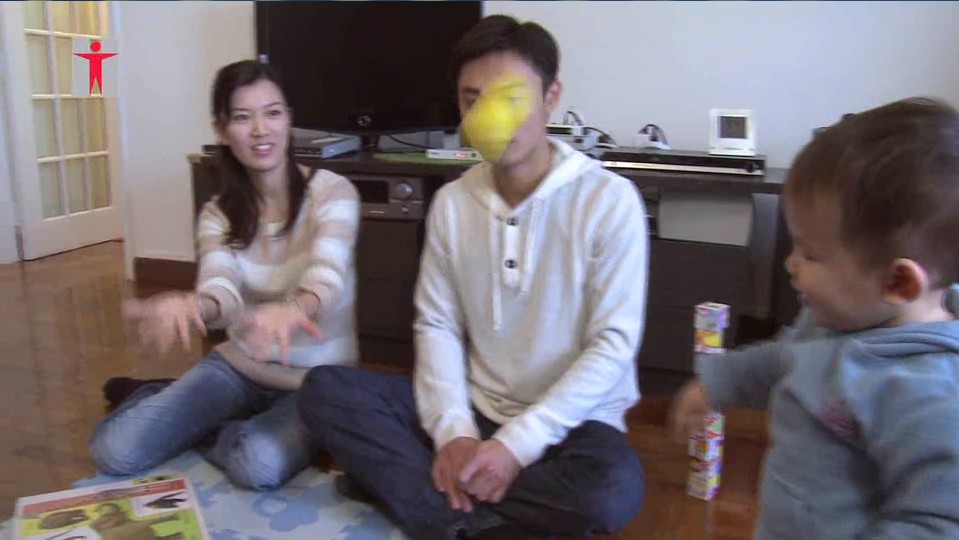
I will try solving simple problems, e.g. I will try to get things out of my reach by using a stick
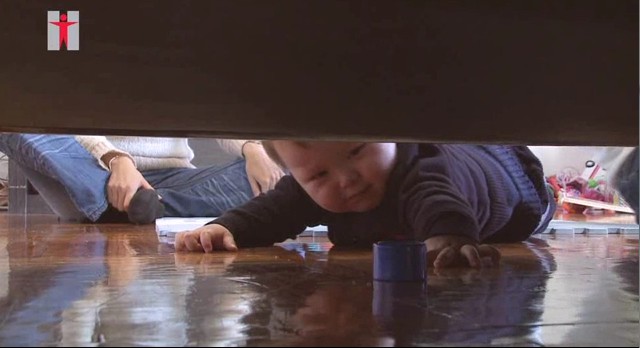
I need repeated practice and encouragement. Foster my learning motivation and thinking ability by encouraging me to make different attempts
I like imitating adults
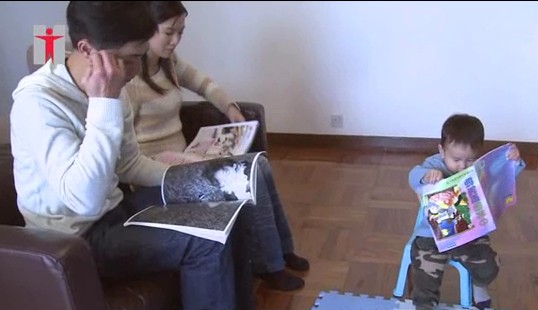
Engage in pretend play with me (e.g. playing tea set, feeding a doll, imitating singing and dancing acts) but do not demand me to imitate your actions immediately
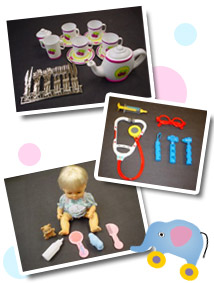
I can take care of myself
Give me time and chance to learn by myself
I can pick up food with my fingers and put it into my mouth
I will try to use a spoon to eat and a cup to drink
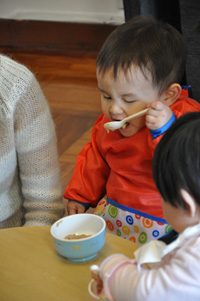
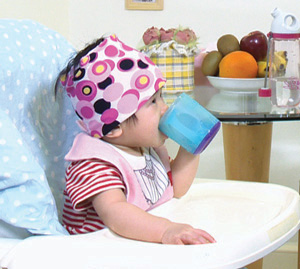
Encourage me to learn to take care of myself, e.g. let me feed myself with a spoon and take off my shoes. Praise me if I can do it, e.g. “Good boy! You can use the spoon yourself!”
Don't worry about the mess I make when I feed myself. You can put a sheet on the floor to make cleaning easier
I need you to understand my emotions
Guide me to get on with people and express my emotions
I like to be with other kids, even though we don't know yet how to play together
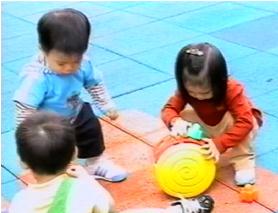
Let me play with other kids while accepting that it takes times for me to get on with them
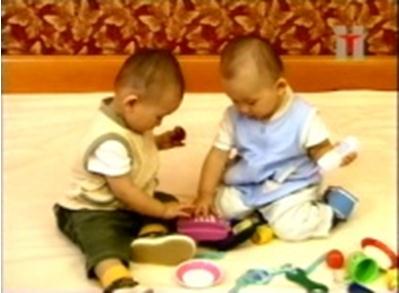
I am still self-centred and will fight over toys with other kids
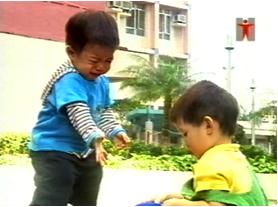
Encourage me to express my needs with gestures and words. Do not spoil me by allowing me to get what I need with crying, hitting and throwing tantrums
I always lose temper as I am still unable to control my emotions and express myself verbally
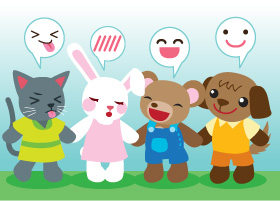
Be my role model
I start leaving your lap more. Remember to stay close and get down to my eye level when talking to me so that I can attend to what you say more easily
